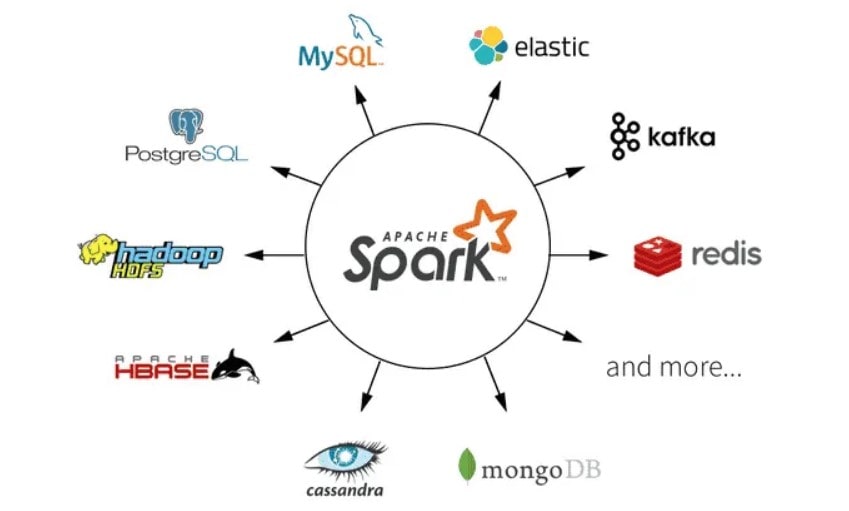
In this age of data, these top-notch tools are like catalysts—they turn huge amounts of data into insights that can be used. They’re what keep your business going and help you make decisions based on data. These tools are game-changers whether you work in finance figuring out how the market will move or healthcare figuring out patterns that will lead to new treatments.
Here’s a sneak peek of what these tools accomplish:
- Streamlining big data processing
- Enhancing Big Data Visualization
- Providing real-time analytics
Plerdy is an expert in UX and SEO analysis. Plerdy sharpens your SEO strategy while providing a user-friendly experience — the ideal combination for success. Immerse yourself in the dynamic world of Big Data Analytics tools and find the one that will propel your company to new heights. So, stay tuned and prepare to harness the power of big data!
What is Big Data Analytics?
Big Data Analytics is a powerful tool that turns unstructured, raw data into insights that make sense. It’s great at working with large amounts of data (often terabytes or petabytes) that other tools can’t handle. Size does matter in this area, and “big” is not an exaggeration.
For instance, in the healthcare niche, it:
- Analyzes patient records for improved care
- Discovers patterns for novel treatments
- Forecasts disease outbreaks
Big data analytics uses complex algorithms and advanced analytics techniques to break down massive amounts of information into manageable, actionable chunks. It provides a complete picture, allowing businesses to make big data-driven decisions quickly.
It transforms industries, from predicting customer behavior in e-commerce to improving predictive maintenance in manufacturing. Big data analytics serves as the driving force behind innovation, making it an essential tool in today’s digital age. Use its power to drive growth, optimize operations, and maintain competitiveness.
Different Types of Big Data Analytics
Big Data Analytics encompasses not just one but several types of mighty tools. Instead, it is divided into four distinct categories, each serving a unique purpose:
- Descriptive Analytics: Unveils the ‘what.’ Data aggregation and mining provide a clear view of past events. For example, imagine a retail business understanding seasonal sales fluctuations. Diagnostic Analytics: Digs deeper into ‘why’ something happened. It uses probabilities, likelihoods, and distributions to identify patterns. For example, consider an airline diagnosing the cause of flight delays.
- Predictive Analytics: Foresees the ‘what next.’ Leveraging statistical models and forecasting techniques, it predicts future possibilities. For example, an insurance company predicting claim amounts.
- Prescriptive Analytics: Advises on the ‘how’ to approach a situation. It suggests decisions based on the results of predictive analytics. Think of an e-commerce site recommending products based on browsing history.
Harness the right type of big data analytics, arm your business with the power to thrive in the digital landscape, and stand out in the crowd.
The Importance of Big Data Analytics Tools
In today’s digital age, the importance of big data analytics tools cannot be overstated. These tools sift through large data sets, accumulating insights that help businesses make informed decisions. In a nutshell, they convert vast amounts of data into understandable, actionable information.
Consider a niche online retailer that sells vintage eyewear. Customers’ purchasing patterns, preferences, and behaviors can be tracked using a comprehensive big data analytics tool. Once analyzed, this data can be used to improve marketing strategies, increase customer engagement, and boost sales.
Here are the main reasons why big data analytics tools are essential:
- Enhanced Decision Making: Big data analysis tools decode complex data into understandable metrics, enabling businesses to make big data-driven decisions confidently.
- Improved Customer Experience: By understanding customer behavior, businesses can tailor their services to meet customer needs – enhancing the overall customer experience.
- Risk Management: Big data tools can predict market trends and business risks, allowing companies to adapt and stay resilient in changing landscapes.
- Operational Efficiency: They streamline business operations by automating routine tasks and highlighting areas that require improvement.
Finally, big data analytics tools are essential cogs in the machinery of modern businesses. They reveal previously unknown insights, creating opportunities for growth, innovation, and success in a highly competitive digital marketplace.
Factors to Consider when Choosing Big Data Analytics Tools
Choosing the right big data analytics tool can help shape your business’s future. These tools can turn your big data into a treasure trove of insights, but you must choose one that is appropriate for your needs. Consider the following niche business: a boutique winery. The winery wants to better understand its customers’ preferences and tailor its production accordingly.
When selecting a big data analytics tool, they may consider the following:
- Scalability: As the winery grows, so does its data. The chosen tool should efficiently handle increasing data volumes without compromising performance.
- Big Data Processing Speed: In the competitive wine market, swift decision-making is key. The tool should process data quickly, providing real-time insights to stay one step ahead.
- Ease of Use: The tool must have an intuitive interface. It’s not about having the most features but about utilizing them effectively.
- Integration Capabilities: The tool should seamlessly integrate with existing systems, from customer relationship management to supply chain logistics.
- Security: In an era where big data breaches are prevalent, robust security features are non-negotiable. Selecting a big data analytics tool isn’t a one-size-fits-all situation. Instead, it’s about finding a tool that aligns with your business goals, operational structure, and data complexity.
1. Hadoop

Hadoop, an open-source big data analytics tool, has transformed how we manage large data sets. With its distributed storage and processing capabilities, Hadoop can manage data across multiple machines, breaking down silos and unifying big data access.
Consider an energy company seeking to maximize its renewable resources. They could use Hadoop to analyze massive amounts of meteorological data in order to forecast wind patterns, optimize turbine operations, and maximize power generation.
Here are some key features that make Hadoop a top-tier big data analytics tool:
- Distributed Processing: Hadoop processes big data across a cluster of computers. This distribution accelerates processing speeds and ensures data redundancy – if one machine fails, the data is still safe.
- Scalability: Hadoop’s ability to scale up or down quickly and effortlessly makes it for businesses with fluctuating data needs. Fault
- Tolerance: The system is designed to automatically reassign tasks to other nodes if a node fails, ensuring seamless operation. Cost-
- Effectiveness: As an big data analytics tools open source, Hadoop offers a cost-effective solution for businesses to manage their big data needs.
- Flexibility: Hadoop can handle structured and unstructured data, enabling businesses to analyze various big data types for comprehensive insights.
In essence, Hadoop is a robust platform for big data analytics, offering a scalable, flexible, and cost-effective solution for businesses across various sectors.
2. Storm
Storm, an open-source big data analytics tool, stands out in the field of real-time big data processing. Storm is well-known for its durability and dependability, making it an ideal platform for businesses that require quick data analysis.

Consider a niche weather forecasting agency. They could use Storm to process live atmospheric data, resulting in accurate and timely forecasts to keep their audience informed.
Here’s a closer look at what makes Storm a go-to big data analytics tool:
- Real-Time Processing: Storm excels in processing vast data streams in real-time, providing instant insights for prompt decision-making.
- Fault Tolerance: With Storm, data processing continues even when a node fails—it’s designed to ensure that no data is lost.
- Scalability: Storm can easily scale up to handle big data volumes, offering flexibility to businesses as they grow.
- Ease of Use: With support for multiple programming languages, Storm offers a user-friendly platform for developers. Integration: Storm can be effortlessly integrated with other systems, allowing businesses to leverage existing data resources.
Storm is a very powerful tool for businesses that want to analyze big data in real time. Businesses can get timely insights from their big data thanks to its strong and reliable architecture, which gives them the power to make smart decisions.
3. Hive
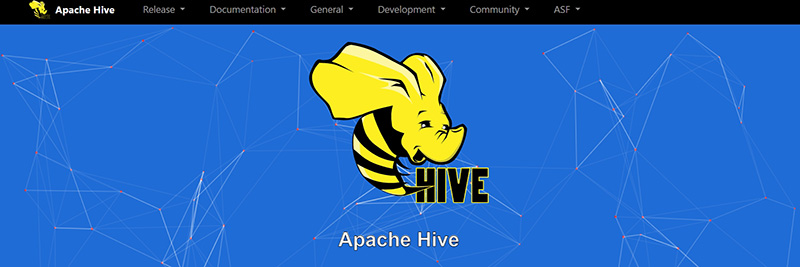
Big data analytics needs tools like Hive to make complex queries easier to run and manage large datasets. Big data analytics is easier to do with Apache’s Hive, which turns SQL-like queries into MapReduce jobs.
Visualize a huge store chain that handles millions of transactions every day across many locations. To make sales predictions, they have to look at what customers buy, find trends, and analyze customer buying behavior. The huge job can be done with Hive, which makes data analysis and querying easier.
Hive shines in the following aspects:
- Ease of Use: HiveQL, a SQL-like language, allows analysts to query data without writing complex MapReduce jobs.
- Scalability: Hive can efficiently handle big datasets in Hadoop’s HDFS and compatible data stores like Amazon S3.
- Extensibility: Hive’s user-defined functions (UDFs) allow you to extend its functionality and perform custom data manipulations.
- Compatibility: Hive supports various data formats, including CSV, JSON, and ORC.
Organizations can use Hive to delve into their massive data sets and discover insights that can drive business growth. Its simplicity, scalability, and extensibility make it an excellent big data analytics tool for businesses. Furthermore, with its ability to handle a variety of data formats, Hive stands out as a versatile big data tool, paving the way for effective big data analytics.
4. RapidMiner
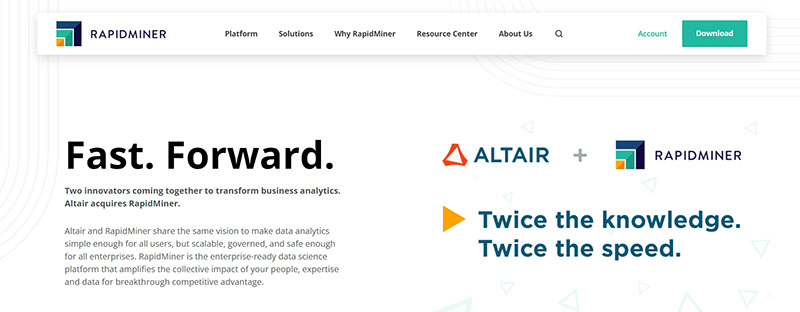
RapidMiner, an important tool in big data analytics, takes the spotlight with its end-to-end data science platform. It gracefully carves paths through the mountainous terrain of big data, enabling businesses to generate actionable insights quickly.
Consider an e-commerce company that wants to maximize customer retention. RapidMiner steps in, sifting through customer data, identifying patterns, and ultimately providing actionable strategies to increase customer loyalty.
Features that make RapidMiner shine include:
- Automated Big Data Preparation: Eases data cleansing and formatting processes.
- Rich Algorithm Set: Provides a range of machine learning methods.
- Model Validation: Ensures accuracy and reliability of predictive models.
- Easy Deployment: Allows models to be put into production seamlessly.
RapidMiner starts by automatically cleaning and preparing the data, which gives accurate analytics a strong base. Then, it gives businesses a wide range of machine learning algorithms that let them use the power of predictive analytics. The tool’s strong validation process makes sure that these models are accurate.
Lastly, its easy deployment feature lets businesses use these models right away, which helps them make real-time decisions based on data. RapidMiner shows you how to turn big data into business value. It is not only a tool, but also a reliable guide that helps companies quickly and confidently find their way around big data.
5. Cassandra

The open-source big data analytics tool Cassandra is known for being able to handle huge amounts of structured data without any problems and on a large scale. Because of this, it’s perfect for companies that need a strong, spread-out database system to handle their large amounts of data.
Take a niche in the telecommunications industry as an example. Cassandra could help a telecom company handle billions of call records every day, making it easier to manage and analyze data. Some things that make Cassandra stand out among big data tools are:
- Fault Tolerance: Cassandra ensures no single point of failure, making it a resilient choice for critical data operations.
- Scalability: Cassandra provides linear scalability, allowing businesses to expand their data operations without a hitch.
- Flexible Data Storage: Cassandra can handle all types of big data, from structured to semi-structured, providing flexibility for diverse data needs.
- Data Replication: Cassandra offers multi-datacenter replication, ensuring data is available even during a data center outage.
- High Performance: Cassandra delivers fast read and write operations, which is essential for businesses dealing with large volumes of data.
Cassandra offers a dependable and scalable solution for businesses dealing with massive, complex data workloads. Its ability to handle a variety of data types while maintaining high performance makes it a reliable partner for businesses looking to gain insights from data.
6. Flink
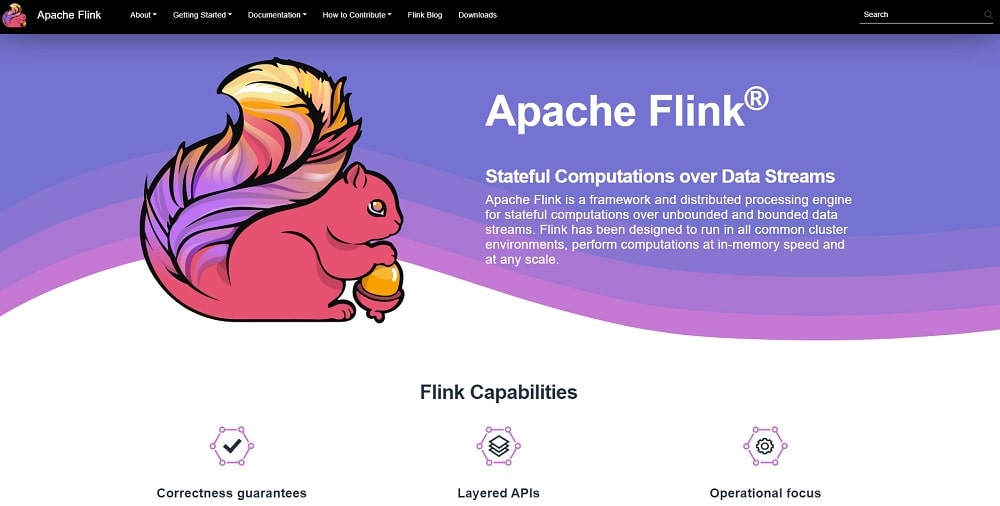
Flink stands out among big data analytics software due to its exceptional stream processing capabilities. Flink is a popular open-source platform for real-time big data analysis due to its lightning-fast data processing speed.
Consider a niche fintech startup that provides personalized investment advice. By leveraging Flink’s power, they can analyze live market data, identify trends, and provide real-time recommendations to their clients.
Here’s what sets Flink apart:
- Real-time Stream Processing: Flink’s forte lies in its ability to process continuous data streams in real-time, which is perfect for businesses requiring immediate insights.
- Event Time Processing: Unlike many big data tools, Flink can process data based on the time the events occurred, not just when they arrived at the system.
- Fault Tolerance: Flink offers robust fault tolerance mechanisms to safeguard against big data loss.
- Scalability: Flink scales effortlessly to handle big data loads, making it suitable for businesses of all sizes.
- Integration: Flink works seamlessly with Hadoop and other popular big data systems.
In short, Flink offers a powerful solution for businesses leveraging real-time big data analytics. Its unique features enable companies to stay responsive and agile in a data-driven world.
7. Tableau

Tableau, a leading big data analytics tool, helps businesses turn raw, complex data into clear, actionable insights. This powerful platform also includes a suite of products that address various data visualization requirements. Consider a healthcare organization that aims to improve patient outcomes.
They can use Tableau to visualize patient data, identify trends, and make informed decisions, all of which improve overall healthcare quality.
Tableau stands out for its:
- Interactivity: Users can dive into data, explore different views, and drill down into specifics.
- Accessibility: With Tableau Public, anyone can publish data visualizations online.
- Integration: Tableau harmonizes with many data sources, from Excel to SQL servers.
- Flexibility: It caters to various business departments, from marketing to finance.
Businesses can use Tableau to make decisions based on data. Its interactivity lets people not only see data but also interact with it. Its ease of use makes big data analytics more accessible, which makes it a great tool for companies that want to make data more open to everyone. Tableau makes sure that data silos never become a problem by connecting to many different data sources. Furthermore, its adaptability highlights its versatility, making it a top choice for a wide range of business departments. Tableau is a real big data master that makes sense of messy data.
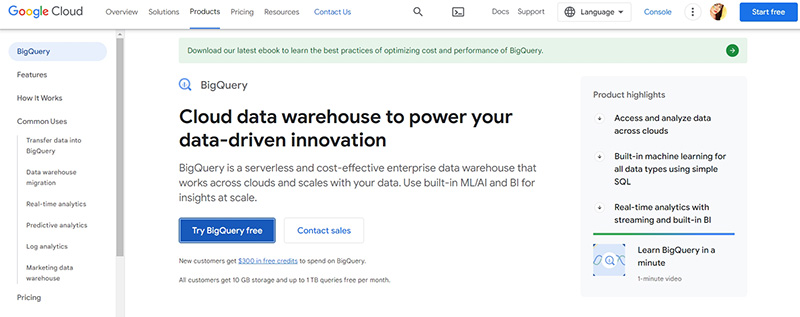
Harness the power of big data with Google BigQuery, an advanced data warehouse tool that provides lightning-fast data analysis. This Google Cloud service enables you to scan, analyze, and visualize massive datasets in seconds, providing insights that can transform your business. Assume you run an e-commerce platform with a global customer base. With Google BigQuery, you can instantly analyze billions of transactions to identify sales trends and understand customer behavior.
Its key features include:
- Full Managed Service: Automated resource management and data infrastructure.
- Real-time Analytics: Analyzes streaming big data for instant insights.
- High Scalability: Easily handles data of any size.
- AI Integration: Built-in machine learning for predictive analytics.
For added convenience, Google BigQuery can easily handle data of any size, so it can grow with your business. With machine learning built in, predictive analytics is easy, and you can see trends coming and make smart choices. Google BigQuery, the giant of big data analytics tools, can help you turn huge amounts of data into useful insights, which will allow you to make smart decisions based on data.
9. MongoDB

A document-oriented database model is what MongoDB, a popular tool for analyzing big data, uses. This new way of storing and retrieving big data works well for businesses that have to deal with unstructured data. Imagine this happening in the health care field. A hospital needs to keep and look over many different kinds of patient records. MongoDB lets them handle this data well, and it can handle different types of data, like medical images and text records.
MongoDB distinguishes itself through the following features:
- Document-Oriented Storage: It excels in storing, retrieving, and processing document-oriented information, providing an edge in handling unstructured data.
- Horizontal Scalability: MongoDB can grow with your data, allowing you to add more machines as your big data inflates.
- High Performance: It provides high-performance data persistence, particularly suitable for handling large-scale data.
- Flexible Big Data Model: MongoDB’s schema-less data model provides great flexibility for evolving data structures.
- Indexing: Its ability to create secondary indexes enables optimized searches and improves overall performance.
MongoDB can help organizations turn unstructured data into insights that they can use. Its focus on documents, ability to grow, and fast performance make it a must-have for companies using big data analytics. The flexibility and indexing features of MongoDB make it even more appealing, making it a solid choice for big data analytics tools.
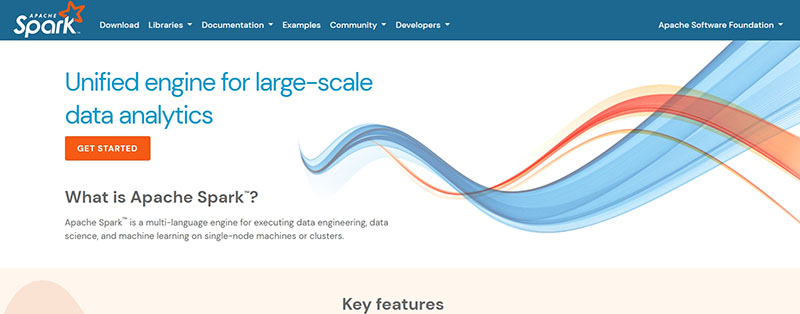
Apache Spark is an open-source, powerful tool for analyzing large amounts of data. It is changing the way data is processed. Spark gives businesses a complete platform for analyzing big data and machine learning. It is known for being fast and easy to use. For example, think about a niche news website. Spark could help them look at real-time user behavior, find topics that are popular, and make sure their content fits the interests of their readers.
Here’s a rundown of Apache Spark’s main features:
- Lightning Fast Processing: Spark’s in-memory computing capabilities accelerate big data processing speeds, perfect for applications requiring real-time insights.
- Ease of Use: Spark supports multiple programming languages, including Java, Scala, and Python, offering a versatile platform for developers.
- Advanced Analytics: With built-in modules for SQL, streaming, and machine learning, Spark provides an all-in-one platform for big data analytics.
- Fault Tolerance: Spark’s resilient distributed datasets (RDDs) provide a robust fault tolerance mechanism – if data is lost, the system can recover it seamlessly.
- Compatibility: Spark integrates with Hadoop and its ecosystem, allowing businesses to tap into existing Hadoop data and resources.
Apache Spark is a formidable player in big data analytics tools. By leveraging its capabilities, businesses can drive faster insights, make informed decisions, and stay competitive in the digital landscape.
11. PowerBI
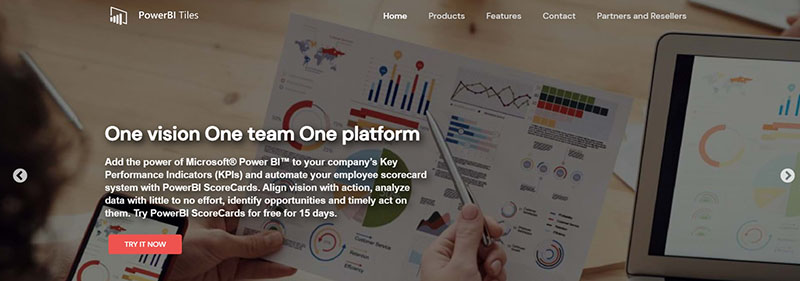
Businesses can turn complicated, unprocessed data into clear, actionable insights with PowerBI, a powerful big data analytics tool. This set of business analytics tools lets you look into your big data and find business insights. Take the example of a logistics company that wants to make its supply chain more efficient. With PowerBI, they can see data about the supply chain, find problems, and come up with ways to make things run more smoothly.
PowerBI’s key offerings include:
- Real-time Dashboards: Generate live dashboards and reports with up-to-the-minute data.
- Data Connectivity: Pulls data from hundreds of sources, cloud-based or on-premises.
- Collaboration: Allows sharing of reports and dashboards across the organization.
- Customization: Offers the flexibility to create custom visuals fitting your needs.
PowerBI inspires data-driven business decisions. Its real-time dashboards provide business metrics updates. Data connectivity allows seamless access and visualization of data from multiple sources. Collaboration makes sharing insights with teammates easy, promoting a data-driven culture. Users can customize visuals to their liking, making the tool highly adaptable. As a big data conductor, PowerBI brings order to the chaos and helps businesses shine.
12. Talend

Talend is software for integrating and managing data. It is also a useful and trustworthy tool for analyzing large amounts of data. Businesses can use the power of data by making complex data environments easier to work with. Let’s look at an online store as an example. They can easily combine customer data from different platforms with Talend, which gives customers a more personalized experience and increases sales.
Key strengths of Talend include:
- Data Integration: Unifies various data sources into a comprehensive view.
- Data Quality: Ensures clean, reliable data for accurate analytics.
- Scalability: Handles both small and big datasets effectively.
- Real-Time Processing: Offers quick insights to facilitate prompt decision-making.
With Talend’s data integration feature, businesses can combine different data sources into a single view that helps them understand and make decisions. Its real-time processing makes quick decisions based on data easier. Talend is like a trustworthy sherpa on the path through big data; it brings together, cleans, and analyzes data to give you useful insights. Because of this, it’s the perfect tool for businesses that want to move quickly and easily through the world of big data.
13. QlikView
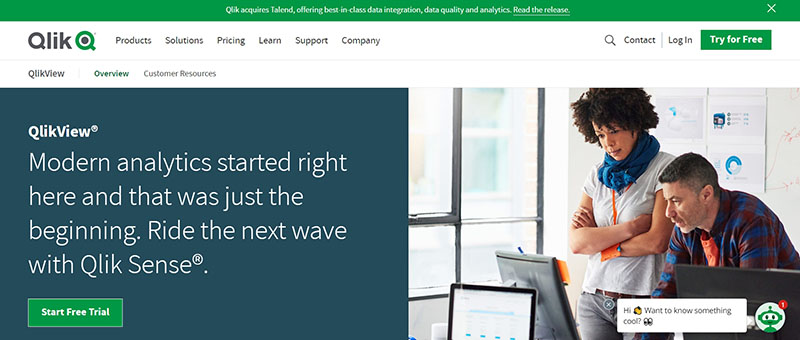
A well-known big data analytics tool called QlikView helps businesses turn raw data into useful insights. Its one-of-a-kind associative data indexing engine makes sense of data from many sources, which makes it easier to make flexible, interactive visualizations. Image a healthcare provider having a hard time keeping track of patient information. They could make an interactive dashboard, see patterns, and speed up the process of managing their patients with QlikView.
Key features of QlikView include:
- Associative Data Engine: Enables users to discover hidden trends and patterns.
- Interactive Dashboards: Facilitates the creation of dynamic visuals and reports.
- Data Integration: Consolidates data from disparate sources into a single view. Secure,
- Governed Access: Ensures data security and integrity.
QlikView’s associative data engine automatically finds relationships in data sets, revealing unexpected insights. Users can easily manipulate and navigate data on its interactive dashboards. Users can navigate big data without getting lost because data integration simplifies the landscape. QlikView’s secure, governed access keeps big data private. QlikView connects big data to decision-making. Businesses use it as a lighthouse in a sea of big data. QlikView helps businesses navigate big data and achieve goals.
14. KNIME
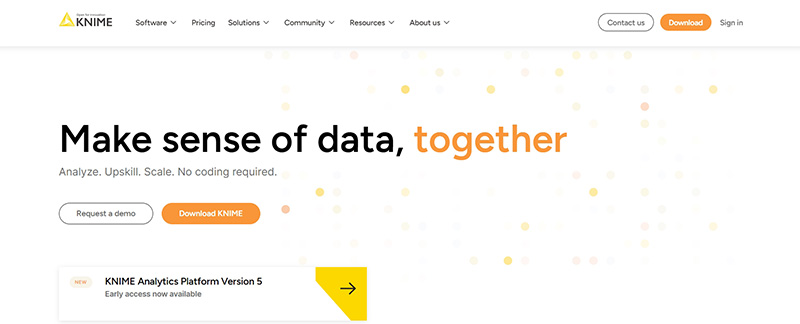
When it comes to big data, KNIME is the star of the show. The platform is open source and easy to use, and the tool for analyzing big data is useful. KNIME gives data professionals a solid platform to play their data-driven symphonies, turning raw data into insights that matter. For example, a healthcare organization can use KNIME to look at patient data, find patterns, and make decisions based on the data to improve the health of their patients.
KNIME’s salient features include the following:
- Intuitive Interface: Enables drag-and-drop data manipulation.
- Scalability: Manages small to big datasets with equal ease.
- Integration: Seamlessly blends with various data formats and sources.
- Flexible: Offers both coding and no-coding options.
KNIME’s simple interface lets users drag and drop components to create workflows. It scales well to manage small to large datasets. KNIME integrates data sources and formats to create a unified view. It supports beginners to experts with coding and no-coding options. KNIME orchestrates the big data concert from raw data to insightful analytics and guides data professionals through the data landscape.
15. ElasticSearch
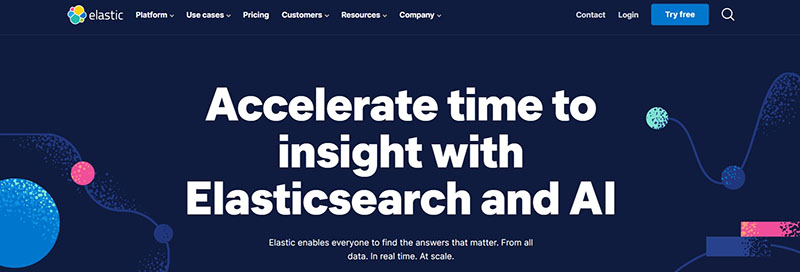
ElasticSearch does well as an open-source big data analytics tool that can be used for any kind of search and analytics. ElasticSearch helps businesses quickly find their way through huge data lakes. It is known for being efficient and quick. Think about a niche online store. ElasticSearch can help them offer powerful, real-time product search features that will make their customers’ shopping experience better.
Key features of ElasticSearch include:
- Full-Text Search: ElasticSearch excels at handling full-text searches, making it easier for businesses to find specific data within their vast data pools.
- Scalability: ElasticSearch can scale horizontally to handle growing data volumes, ensuring businesses can expand without worrying about big data management.
- Real-Time Analytics: ElasticSearch offers real-time analytics, providing businesses with instant insights for quick decision-making.
- Distributed Nature: ElasticSearch operates in a distributed environment, enhancing data processing efficiency and speed.
- Integration: ElasticSearch pairs well with popular big data tools like Logstash and Kibana, offering a complete analytics platform.
In short, ElasticSearch gives businesses that need to sort through huge amounts of data a powerful, scalable way to do it. Businesses can get insights from their data and make smart, timely decisions with its full search and analytics features.
Source: Plerdy
